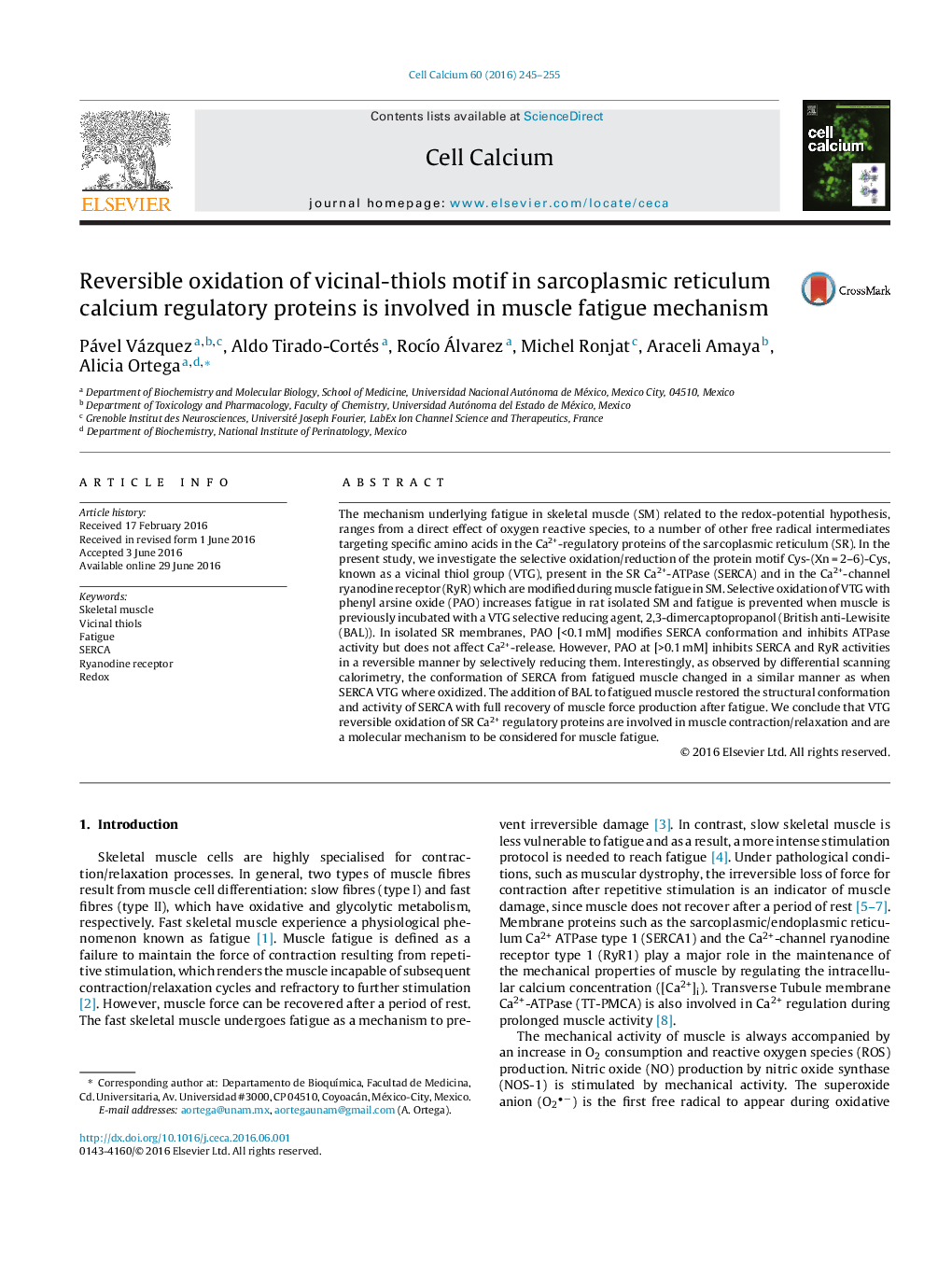| کد مقاله | کد نشریه | سال انتشار | مقاله انگلیسی | نسخه تمام متن |
|---|---|---|---|---|
| 5530595 | 1401752 | 2016 | 11 صفحه PDF | دانلود رایگان |
- SERCA and Ryanodine receptor are vicinal-thiol protein redox regulated.
- Selective vicinal-thiol protein reduction prevents skeletal muscle fatigue.
- Selective vicinal-protein thiol oxidation increases skeletal muscle fatigue.
- Vicinal-thiols as physiological switches in muscle mechanical properties.
The mechanism underlying fatigue in skeletal muscle (SM) related to the redox-potential hypothesis, ranges from a direct effect of oxygen reactive species, to a number of other free radical intermediates targeting specific amino acids in the Ca2+-regulatory proteins of the sarcoplasmic reticulum (SR). In the present study, we investigate the selective oxidation/reduction of the protein motif Cys-(Xn = 2-6)-Cys, known as a vicinal thiol group (VTG), present in the SR Ca2+-ATPase (SERCA) and in the Ca2+-channel ryanodine receptor (RyR) which are modified during muscle fatigue in SM. Selective oxidation of VTG with phenyl arsine oxide (PAO) increases fatigue in rat isolated SM and fatigue is prevented when muscle is previously incubated with a VTG selective reducing agent, 2,3-dimercaptopropanol (British anti-Lewisite (BAL)). In isolated SR membranes, PAO [<0.1 mM] modifies SERCA conformation and inhibits ATPase activity but does not affect Ca2+-release. However, PAO at [>0.1 mM] inhibits SERCA and RyR activities in a reversible manner by selectively reducing them. Interestingly, as observed by differential scanning calorimetry, the conformation of SERCA from fatigued muscle changed in a similar manner as when SERCA VTG where oxidized. The addition of BAL to fatigued muscle restored the structural conformation and activity of SERCA with full recovery of muscle force production after fatigue. We conclude that VTG reversible oxidation of SR Ca2+ regulatory proteins are involved in muscle contraction/relaxation and are a molecular mechanism to be considered for muscle fatigue.
178
Journal: Cell Calcium - Volume 60, Issue 4, October 2016, Pages 245-255
